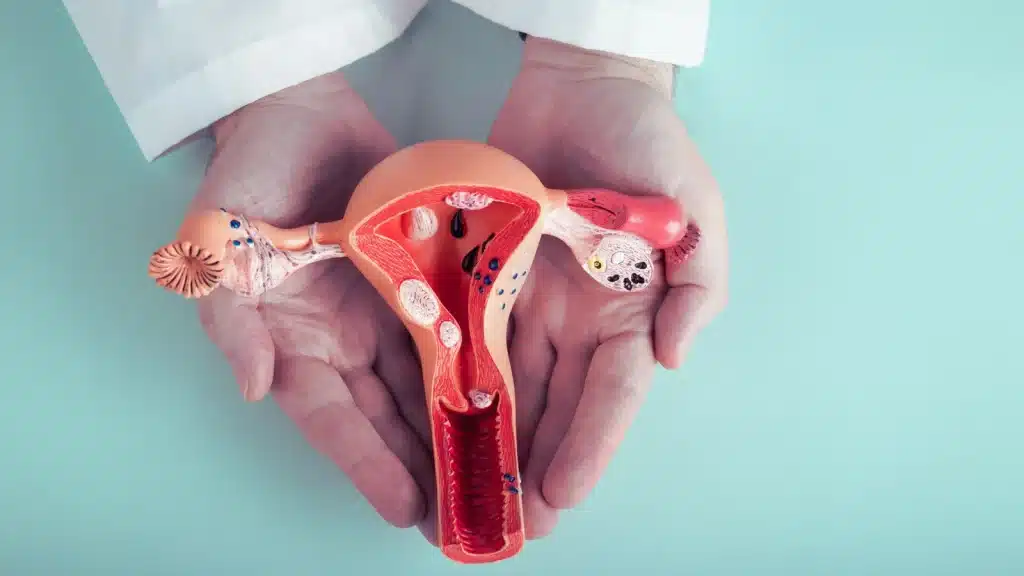Hysteroscopy
At Sahaj Hospital, we specialize in providing comprehensive care for women experiencing abnormal uterine bleeding and related conditions. Our advanced hysteroscopy procedures offer a minimally invasive approach to diagnose and treat various uterine issues, ensuring the highest standards of patient care in Indore. Whether diagnostic or operative, hysteroscopy is a safe and effective solution tailored to your specific needs.
What is Hysteroscopy?
Hysteroscopy is a minimally invasive procedure that allows your doctor to examine the inside of your uterus using a thin, lighted instrument called a hysteroscope. Inserted through the vagina and cervix, the hysteroscope enables detailed visualization of the uterine cavity, aiding in accurate diagnosis and treatment of various conditions.
Our Specialties

Diagnostic Hysteroscopy
Diagnostic hysteroscopy is typically recommended to investigate uterine problems identified through imaging tests like hysterosalpingography (HSG), a specialized X-ray that uses dye to highlight the uterus and fallopian tubes. By directly visualizing the uterine cavity, diagnostic hysteroscopy can confirm the presence of conditions such as:
- Polyps or fibroids
- Uterine adhesions (Asherman’s Syndrome)
- Septal abnormalities (uterine malformations present from birth)
- Causes of abnormal bleeding, including heavy menstrual flow or postmenopausal spotting
In some cases, diagnostic hysteroscopy is combined with laparoscopy for a complete evaluation of both the inside and outside of the uterus, ovaries, and fallopian tubes.
Operative Hysteroscopy
When treatment is required, operative hysteroscopy enables doctors to address specific uterine conditions, including:
- Polyps and Fibroids: Removal of non-cancerous growths that may cause abnormal bleeding or infertility.
- Adhesions: Removal of scar tissue bands that alter uterine shape and affect fertility.
- Septums: Correction of uterine malformations to restore normal anatomy.
- Abnormal Bleeding: Identification and treatment of causes, including endometrial ablation for heavy bleeding.
Benefits of Hysteroscopy
Hysteroscopy offers several advantages over traditional surgical methods:
- Minimally invasive with no major incisions
- Reduced recovery time and hospital stay
- Less postoperative pain and medication requirement
- Lower risk of complications
- Potential avoidance of hysterectomy or open abdominal surgery
At Sahaj Hospital, we ensure that each patient receives personalized care and benefits from these advancements.
What to Expect During and After the Procedure
Preparation: The procedure is typically scheduled during the first week after your menstrual period for optimal visualization. Your doctor may recommend fasting if general anesthesia is used.
Procedure Steps:
- Cervical dilation for hysteroscope insertion.
- Introduction of gas or liquid to expand the uterus for better visibility.
- Insertion of the hysteroscope to examine the uterine cavity and openings of the fallopian tubes.
- Use of specialized instruments for any required surgical interventions.
Recovery: Most patients experience mild cramping or light vaginal bleeding for 1–2 days post-procedure. Some may feel shoulder discomfort due to gas used during the process. It is important to seek immediate medical attention if there is severe pain, heavy bleeding, or signs of infection.
Who is a Candidate for Hysteroscopy?
While hysteroscopy is generally safe, it may not be suitable for everyone. Conditions such as active pelvic infections or pregnancy contraindicate the procedure. Our experienced specialists work closely with your primary care doctor to determine if hysteroscopy is appropriate for you.
